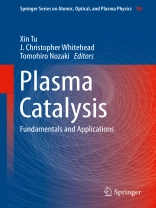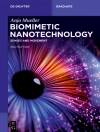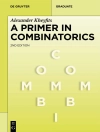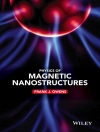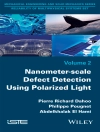This book provides a comprehensive overview of the field of plasma catalysis, regarded as a promising alternative to thermal processes for energy and environmental applications. It bridges the gap between the plasma and catalysis research communities, covering both the fundamentals of plasma catalysis and its application in environmental and energy research.
The first section of the book offers a broad introduction to plasma catalysis, covering plasma-catalyst systems, interactions, and modeling. The core of the book then focuses on different applications, describing a wide range of plasma-catalytic processes in catalyst synthesis, environmental clean-up, greenhouse gas conversion and synthesis of materials for energy applications. Chapters cover topics ranging from removal of NOx and VOCs to conversion of methane, carbon dioxide and the reforming of ethanol and methanol.
Written by a group of world-leading researchers active in the field, the book forms a valuable resource for scientists, engineers and students with different research backgrounds including plasma physics, plasma chemistry, catalysis, energy, environmental engineering, electrical engineering and material engineering.Cuprins
Preface.- 1. Plasma-catalysis: Introduction and History.- 2. Plasma-catalysis systems.- 3. Plasma-catalyst interactions.- 4. Plasma-catalysis modeling.- 5. Plasma catalytic removal of NOX.- 6: Plasma catalytic removal of VOCs.- Plasma catalytic decomposition of NH3.- 8 Plasma catalytic conversion of methane.- 9 Plasma catalytic conversion of carbon dioxide.- 10 Plasma catalytic conversion of alcohol.- 11 Plasma catalysis challenges and future perspectives.
Despre autor
Dr. Xin Tu received Ph D in Physics at CORIA CNRS UMR 6614 (Université de Rouen), France and Ph D in Thermal Engineering at Zhejiang University, China in 2007. He was a Postdoctoral Researcher at Katholieke Universiteit Leuven (Belgium) and the University of Manchester (UK). Dr. Tu was appointed as a Lecturer with the Department of Electrical Engineering and Electronics at the University of Liverpool in 2012, and was promoted to Senior Lecturer in 2015 and Reader in 2017. Dr. Tu has been working for many years on interdisciplinary research at the interface of plasma science and chemical engineering directed towards environmental clean-up, synthesis of fuels and chemicals, nuclear decommissioning, energy conversion and storage. Significant efforts have been devoted to plasma-catalysis where the combination of non-thermal plasma and catalysis has been used as a promising process for the oxidation of gas pollutants (e.g. VOCs and PAHs) and for the conversion of carbon sources (e.g. CH4, CO2, tars and hydrocarbon oils) into value-added synthetic fuels and platform chemicals such as hydrogen, hydrocarbons, carbon nanomaterials and liquid fuels and chemicals. Dr. Tu is the author of 1 book chapter and over 80 peer-reviewed papers. Dr. Tu has received a prestigious B. Eliasson Award from the International Symposium on Plasmas for Catalysts and Energy Materials (ISPCEM) to recognise his significant contributions to plasma-catalysis with emphasis on the fundamental understanding of the synergy of plasma-catalysis in 2014. He has been awarded a Newton Advanced Fellowship by the Royal Society, which is a prestigious award to recognise his international leadership in his area of research.
Christopher Whitehead received a BSc in Chemical Physics at the University of Edinburgh in 1969 and a Ph D at the University of Cambridge in 1972. He then held fellowships at Cambridge and Columbia Universities. He was appointed to the Chemistry Department at Manchester University in 1977 where he is now an Emeritus Professor. His research was initially in the field of crossed molecular beam scattering studying the dynamics of elementary chemical reactions using mass spectrometry and laser-induced fluorescence. Subsequently, there was a focus on the dynamics and kinetics of reactions and photodissociation processes involving atoms and radicals in the gas-phase, in clusters and on surfaces with particular emphasis on the role played by electronically-excited species. This led to a study of the chemistry taking part in gas discharges, chemical lasers and most recently plasma and the use of plasmas for the treatment of waste gas streams such as diesel exhausts and solvents, for the purification of indoor air and the destruction of odours, latterly using the hybrid technique of plasma-activated catalysis as a method of improving efficiency and selectivity. The use of plasma technology for the transformation of gases such as methane andcarbon dioxide into chemical feedstocks and higher value fuels is of current interest. He is the author of over 140 peer-reviewed journal papers and a few book chapters. He is a member of editorial board for Plasma Chemistry and Plasma Processing.
Dr. Nozaki received B.E. and M.E. degrees from Toyohashi University of Technology, Japan, both in Energy Engineering, in 1993 and 1995. He started his carrier at Ishikawajima-Harima Heavy Industries. Co. Ltd. (currently IHI) (’95–’96), where he engaged in the pulverized coal combustion and the environmental protection technology development. He became a faculty of Gifu University in Mechanical Engineering (’96–’99) and an Assistant Professor of Tokyo Institute of Technology in the Department of Mechanical Engineering (’99). He directed his research to the atmospheric pressure plasma chemistry and received Ph.D. from Tokyo Tech in 2003. After his postdoctoral work at the University of Minnesota (’03–’04), hereceived full professorship from Tokyo Institute of Technology in 2012. He pioneered innovative plasma processing technologies based on atmospheric pressure plasmas and is exploring the frontier of Plasma Catalysis, Natural gas conversion, Power-to-Gas, and silicon nanoparticle synthesis and photovoltaic application. He is the author of more than 150 publications including several book chapters. He is currently a Board of Director of International Plasma Chemistry Society, Editorial Board of Plasma Chemistry and Plasma Processing (Springer), International Advisory Board of Plasma Processes and Polymers (Wiley), and the Editor of Springer Series in Plasma Science and Technology (Springer).
